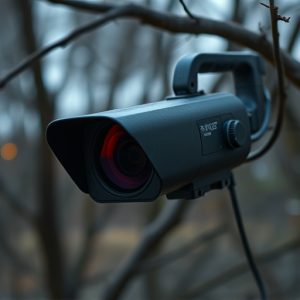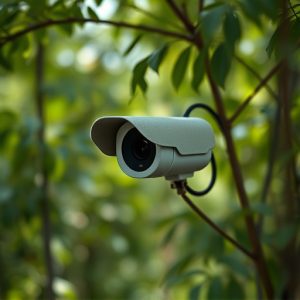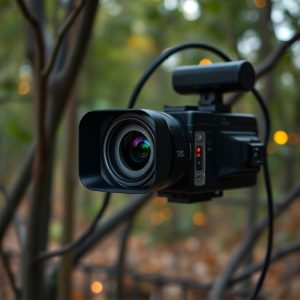Uncovering Hidden Cameras: Advanced Scan Techniques & Legal Guide
Wireless Spy Camera Phone Apps have become a significant concern in today's digital world, allo…….
Wireless Spy Camera Phone Apps have become a significant concern in today's digital world, allowing users to secretly record video and audio through smartphones. These apps exploit wireless technologies like Wi-Fi or Bluetooth to access camera sensors and transmit data remotely. Advanced signal scanning techniques enable the identification of active cameras within range, ensuring proactive privacy protection. However, their use navigates legal and ethical challenges, with strict regulations in many countries and a need for responsible deployment, especially concerning public and private spaces.
Uncover hidden threats with our comprehensive guide on hidden recording device signal scanning. In today’s digital age, privacy breaches can stem from sophisticated wireless spy camera phone apps, making it paramount to understand their workings and detection methods. From basic techniques like manual frequency checks to advanced signal scanning using software-defined radio (SDR), this article explores diverse approaches. We also delve into legal and ethical considerations, ensuring you’re armed with knowledge in this intricate landscape.
- Understanding Wireless Spy Camera Phone Apps
- Techniques for Detecting Hidden Recording Devices
- Advanced Signal Scanning Methods
- Legal and Ethical Considerations in Signal Scanning
Understanding Wireless Spy Camera Phone Apps
Wireless Spy Camera Phone Apps have become a concern in today’s digital era, as they enable users to secretly record video and audio from a distance using their smartphones. These apps operate by transforming mobile devices into covert surveillance tools, capturing footage that can be accessed remotely through an internet connection. Understanding how these applications work is crucial for both consumers and security professionals.
The typical Wireless Spy Camera Phone App utilizes a combination of wireless technology, such as Wi-Fi or Bluetooth, and camera functionality to transmit real-time video feeds. Once installed on a target device, the app can access the phone’s camera sensor, allowing the user to capture images and videos surreptitiously. This covert operation is often facilitated by advanced signal scanning methods that help in identifying active cameras within range, ensuring successful data collection without detection.
Techniques for Detecting Hidden Recording Devices
Detecting hidden recording devices has become a crucial concern in today’s digital age, where privacy breaches can be facilitated by advanced surveillance technology. One of the most effective methods is utilizing specialized wireless spy camera phone apps. These applications are designed to scan and identify covert cameras or recording devices within a certain range. By analyzing visual feeds and detecting unusual patterns or pixel anomalies, these apps can alert users to potential hidden recorders.
The process involves real-time video analysis, where the app’s algorithms scrutinize each frame for signs of tampering or hidden components. Some advanced apps even employ heat mapping techniques to pinpoint areas with elevated temperature readings, which could indicate the presence of active recording devices. This proactive approach empowers individuals and organizations to take control of their privacy by identifying and neutralizing hidden threats.
Advanced Signal Scanning Methods
In the realm of hidden recording device detection, advanced signal scanning methods have emerged as game-changers. One such innovation is the integration of wireless spy camera phone apps, which leverage sophisticated algorithms and sensors to identify subtle electromagnetic signals emitted by clandestine cameras and listening devices. These apps can scan a wide frequency range, from radio waves to infrared, allowing users to detect hidden recording mechanisms that traditional methods might overlook.
By analyzing signal strength, patterns, and anomalies, these apps provide real-time alerts and location data, making it easier to pinpoint the source of unauthorized surveillance. This technology is particularly useful in high-security environments, where maintaining privacy and confidentiality is paramount. The ability to employ wireless spy camera phone apps as a proactive countermeasure ensures that individuals can stay one step ahead of potential privacy breaches.
Legal and Ethical Considerations in Signal Scanning
When employing wireless spy camera phone apps for signal scanning, it’s imperative to navigate a complex landscape of legal and ethical guidelines. The use of such technology raises significant privacy concerns, as it allows for surreptitious recording and monitoring activities that individuals may reasonably expect to be private. Many countries have stringent laws in place to protect personal data and prevent unauthorized surveillance, with penalties for those who violate these norms.
For instance, the use of wireless spy camera phone apps without consent can constitute a breach of privacy and even criminal offenses in some jurisdictions. It’s crucial for users to understand the legal implications of their actions, especially when scanning signals in public spaces or areas where privacy expectations are higher. Ethical considerations also dictate that individuals should only employ these tools for legitimate purposes, such as ensuring safety or protecting property, and never for malicious intent or invasive monitoring.
In the realm of hidden recording device detection, combining knowledge of wireless spy camera phone apps with advanced signal scanning methods offers a robust approach. As technology evolves, so too do the tactics employed by both perpetrators and protectors. Staying informed about the latest techniques, while also considering legal and ethical boundaries, is essential for navigating this complex landscape. By understanding these methods, individuals can take proactive measures to safeguard privacy and prevent unauthorized surveillance.


